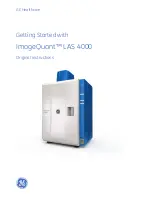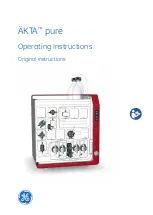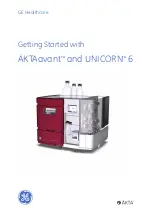
4
•
For OUTDOOR USE ONLY -See below for special instructions below
START COMPOSTING
When you are ready to begin
Set to ‘PET Mode’
and it is recommend keeping it in pet mode at all times. We recommend
starting the unit up with organic waste during the initial startup process. This is going to heat up your unit and get your
cultures established. We recommend filling the upper mixing chamber ¾ of the way up and add an even amount of
green and brown items and let it sit for 12 hours. The next day you can look into the mixing chamber. If the compost
looks similar to soil then close the lid and leave for 24 hours. If the compost looks wet or has odors then add more
pellets and leave for 24 hours. Continue to check on the compost in the upper chamber adding more pellets as need
be. After the first 3-4 days if the compost in the upper mixing chamber looks like compost and seems to be a good
consistency then your cultures are starting to become established. At the end of 7 days if the upper mixing chamber
looks like soil you can transfer to the lower cure tray. With the initial set up your flappers may open and some items
may fall to the lower cure tray. If this happens remove them from the lower tray and put them back in the upper mixing
chamber. This may occur when the lower chamber is empty; once the lower chamber is full it won’t allow items to fall
to the bottom. Once you complete your first transfer then you can start to add your pet waste into the top mixing
chamber. We do recommend putting some food or pet scraps in with the pet waste and bio bags to make a green and
brown ratio. We DO RECOMMEND leaving your unit in PET MODE anytime there is pet waste in the upper mixing
chamber as the pet waste needs to reach a temperature between 140-160 degrees to kill off bacteria and pathogens.
After a few days, pet waste and food will become granular like soil, with steam and heat are in the upper chamber.
Then continue to add waste any time, any day.
>NOTE: Kitty Litter is also acceptable but should not contain any sort of fragrance or additives, as these could destroy
the cultures.
See enclosed FOOD GUIDE
for a list of foods
If you are adding pet waste and bio bags, add a small amount of pellets to help absorb liquid. The pet waste that is
acceptable comes from small animals such as dogs, cats, hamsters, birds. This unit cannot accept large animal waste
such as goats, horses, cows, and sheep. Litter is also acceptable but should not contain any sort of fragrance or
additives as these could destroy the cultures.
•
If you are adding food scraps smaller items compost faster. Cut food item 4 inch (10 cm) pieces or smaller.
•
You can add meat, chicken, fish, eggs, and dairy products, due to the high temperatures inside the mixing chamber.
Add extra sawdust pellets.
•
Do not overload the mixing chamber or it will jam. Add a little food each day or several times per day, rather than a
large amount of food all at once.
•
It is important to keep the composter up to 100 feet from your home as you might experience some odors especially
in the beginning. If you do experience odors it is best to add some extra pellets and baking soda and let the unit just
sit and work through the composting process and regulate itself.
•
Lemon, lime, orange, grapefruit, pineapple, and other acidic foods can kill the cultures; limit them to 2-3 small pieces
per load, or add extra baking soda.
•
Paper, liquid, pits, bones, corn cobs, husks, tough plant stems, etc., will not break down and can cause repeated
jams.
English





































